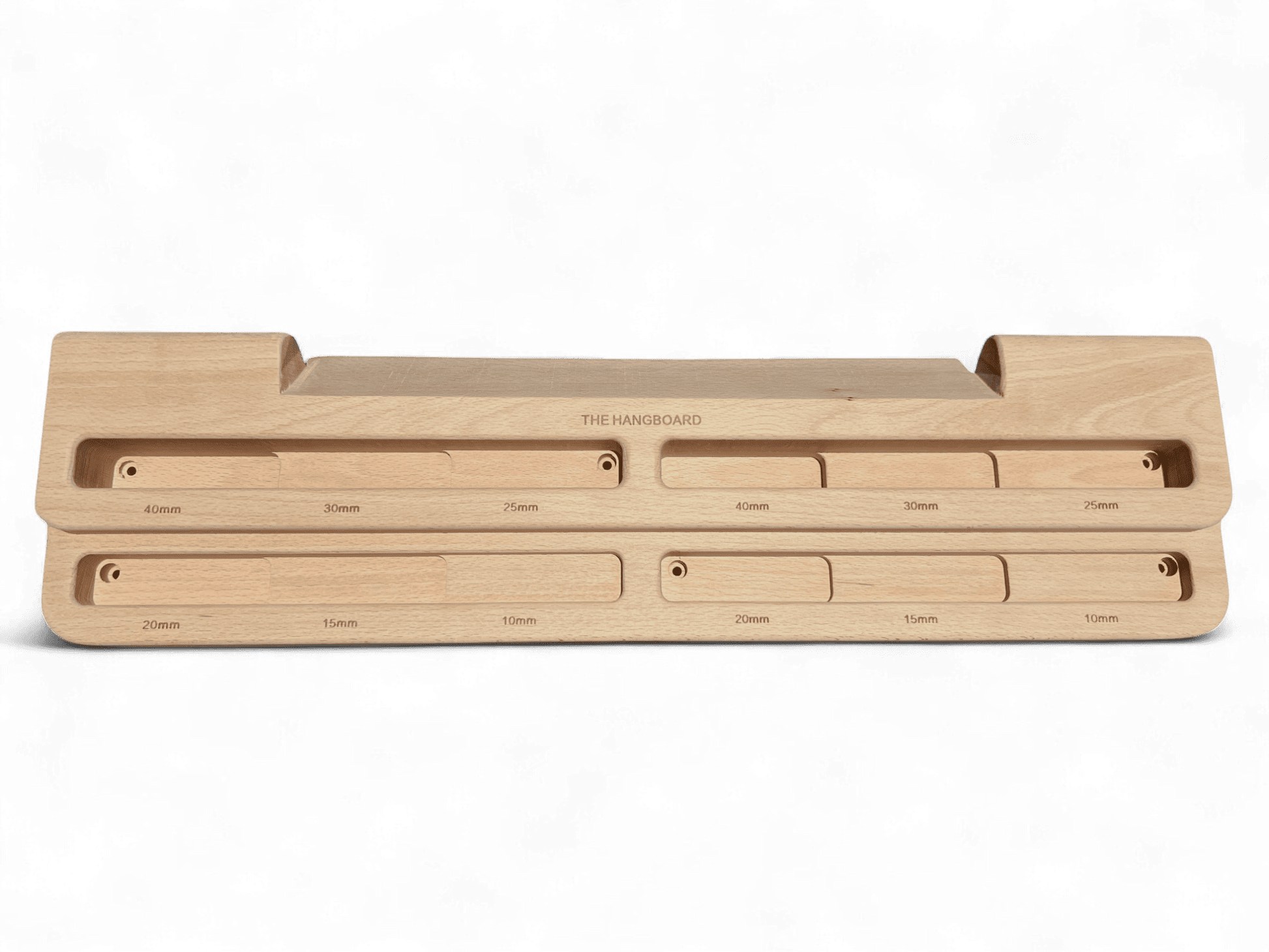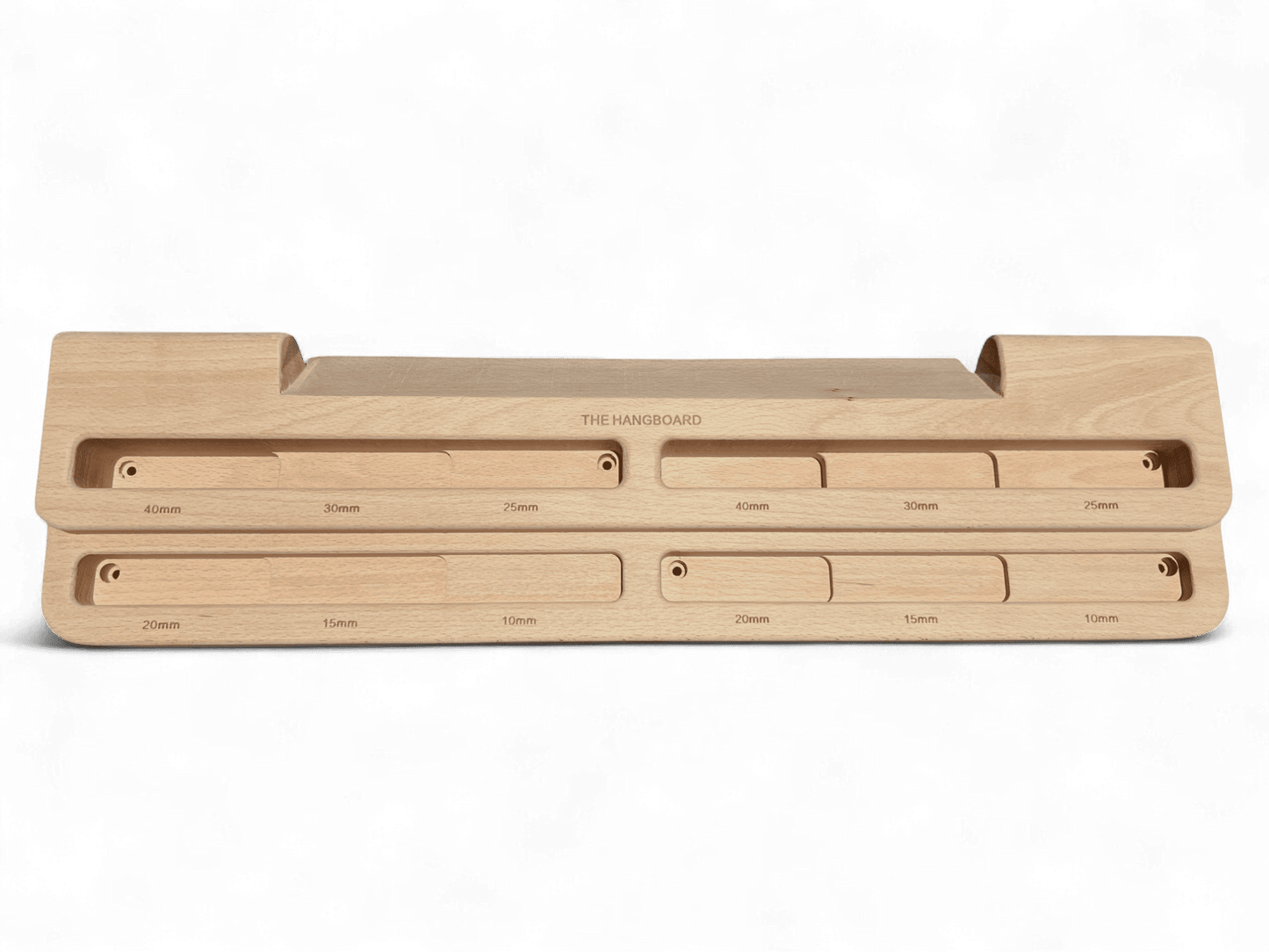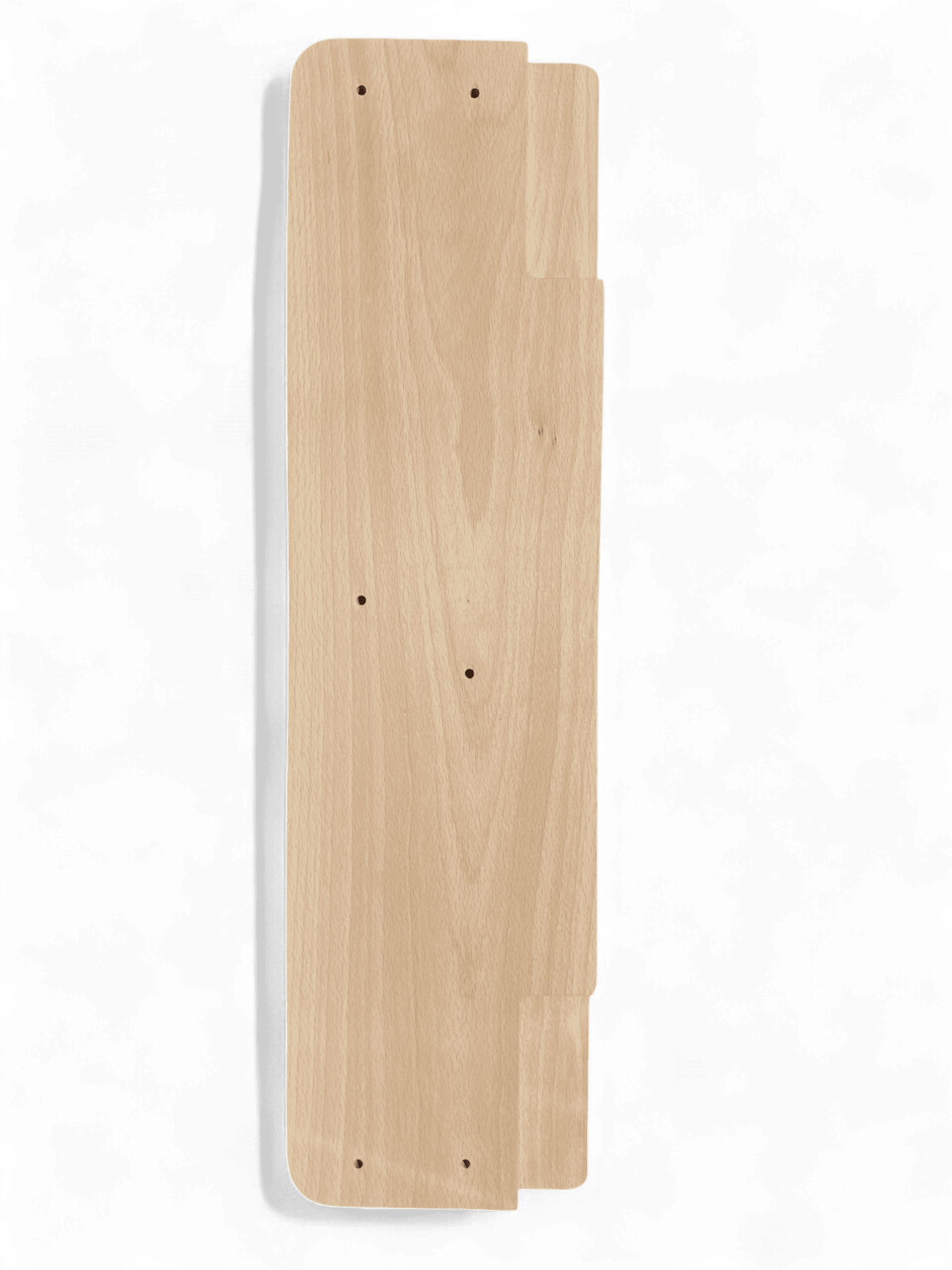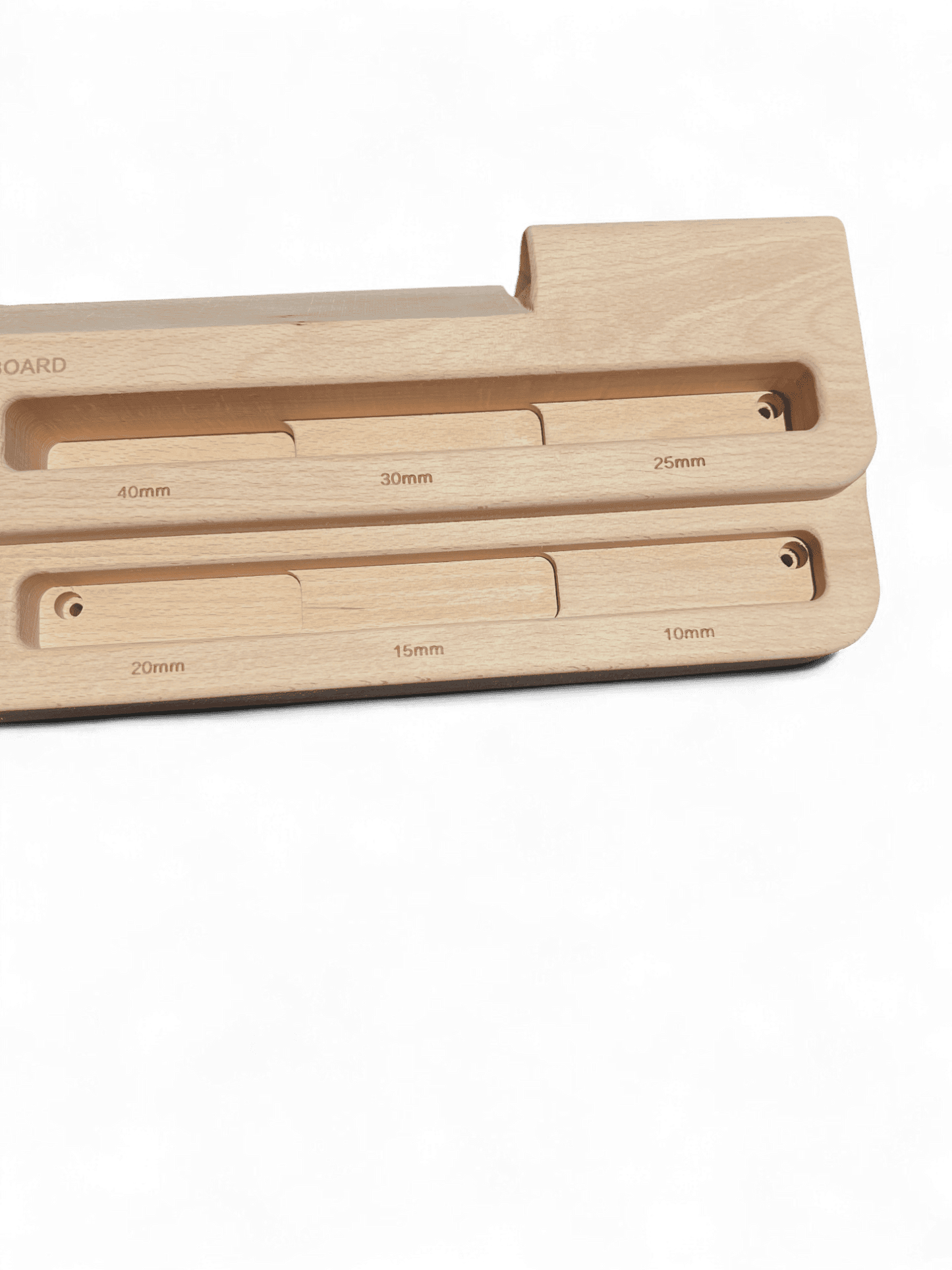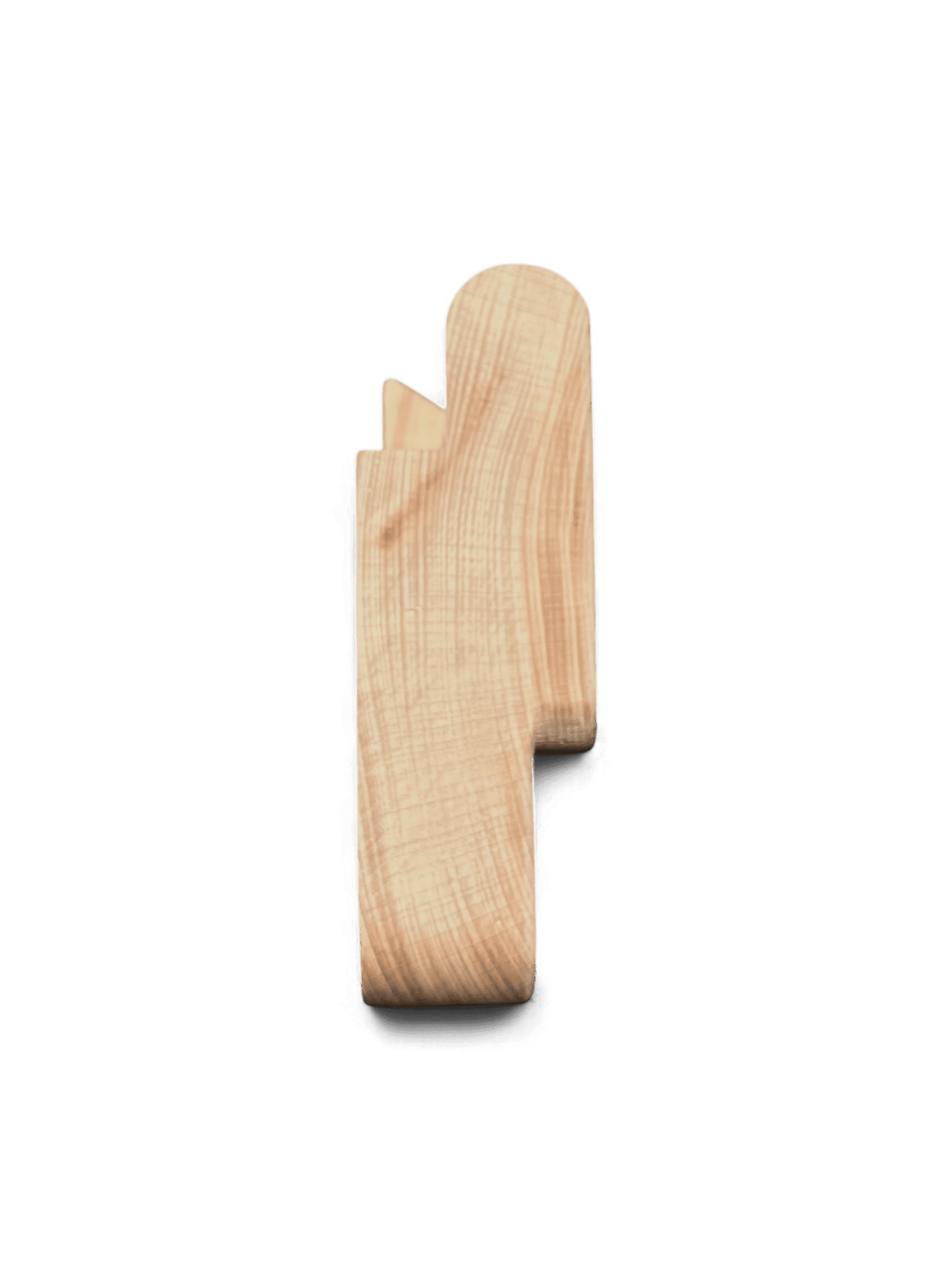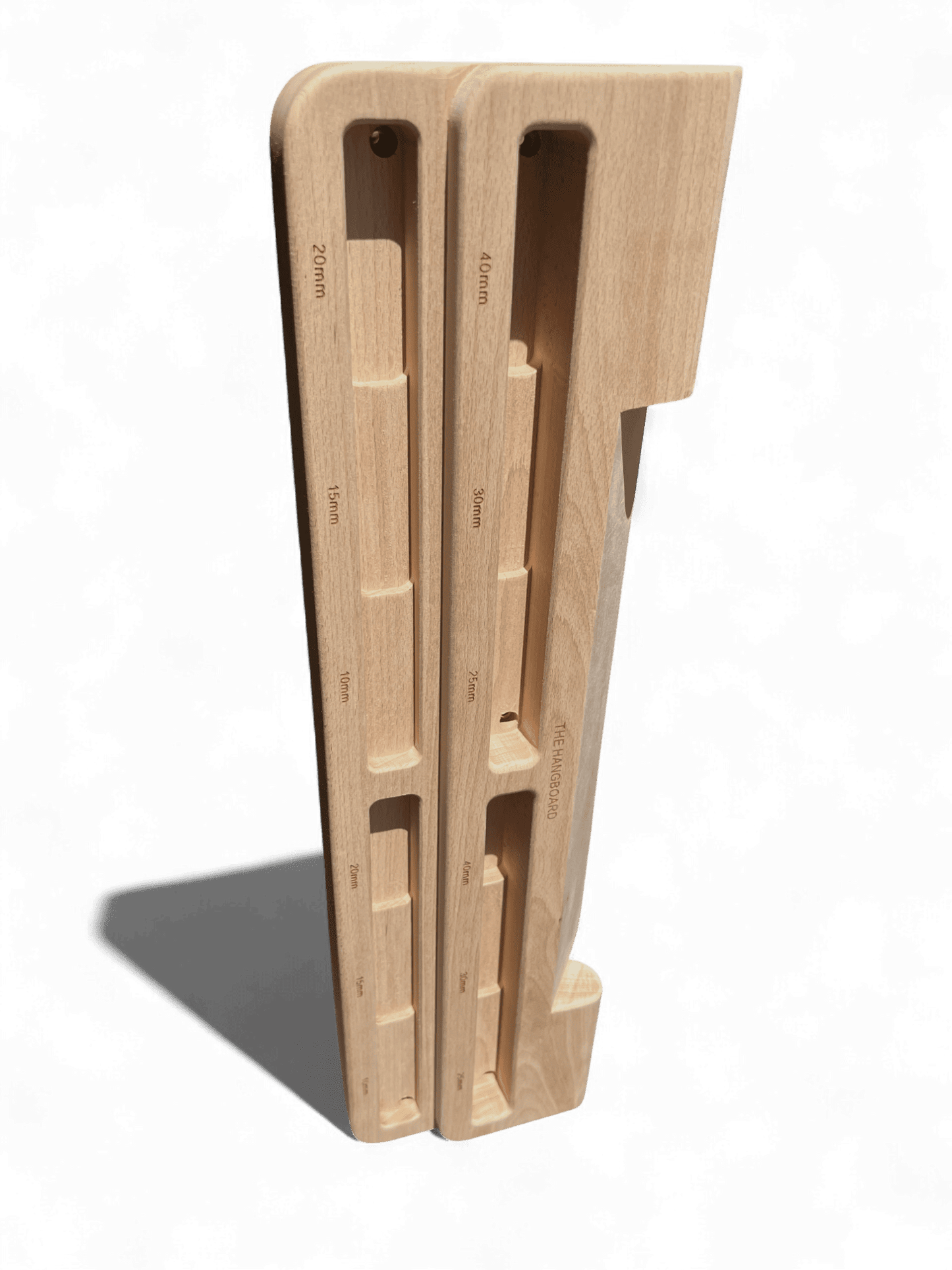Finger Strength Exercises
Hangboarding
For targeted finger strength gains, there's no substitute for the hangboard. This tool allows for a focused workout on finger grip strength, offering several advantages over other exercises. Discover our hangboard, meticulously designed to meet the needs of climbers at every level.

Advantages of Hangboarding
- Specificity: Hangboards allow for targeted training of finger strength. The variety of grip positions (e.g., crimps, pockets, slopers) enables climbers to work on weaknesses and prepare for the specific demands of their projects.
- Measurability: Progress on a hangboard is easily measurable, allowing climbers to track increases in hang time, reductions in rest periods, or progression to smaller holds, providing clear indicators of improvement.
- Convenience: Hangboards are relatively small, can be installed in homes, and don't require access to a climbing gym. This makes it possible to maintain and improve climbing-specific strength even when unable to climb.
- Efficiency: Training sessions on a hangboard can be short yet highly effective, focusing on the critical aspect of finger strength without the need for lengthy climbing sessions. This is particularly beneficial for climbers with limited time.
Disadvantages of Hangboarding
- Risk of Injury: Like all of these exercises, the intense focus on fingers increases the risk of overuse injuries, especially for beginners or those not accustomed to the stress of hangboarding. Proper warm-up, progression, and listening to one’s body are critical to mitigate this risk.
- Lacks Climbing Movements: While excellent for finger strength, hangboarding doesn't simulate the complex body movements, footwork, or problem-solving required in climbing.
Hangboard Repeaters:
Repeaters target the improvement of finger strength endurance, involving sequences of hanging for predetermined durations, commonly 7 seconds, interspersed with short rests, usually around 3 seconds, for multiple repetitions within a set.
This training strategy taps into the anaerobic lactic energy system, balancing between moderate intensity and higher volume. Unlike Max Hangs, Repeaters are executed with a reduced load but extended over longer periods to progressively fatigue the muscles throughout the course of a set, focusing on endurance.
Hangboard Repeaters Workout:
Perform 4-7 sets of repeaters, consisting of 7-second hangs followed by 3-second rests for 6 repetitions per set, with 2-3 minutes of rest between sets. Choose a load that makes the final repetitions difficult yet achievable, focusing on strength endurance.
Hangboard Max Hangs:
Max Hangs are designed to enhance maximum finger strength, primarily through hanging from a hold with the greatest possible load for brief periods, typically not exceeding 10 seconds. This method focuses on utilizing the anaerobic a-lactic energy system, emphasizing high-intensity training but with lower volume.
The objective is often achieved by either adding weight for increased resistance or utilizing smaller holds to escalate the difficulty, targeting significant strength gains in the fingers.
Hangboard Max Hangs Workout:
Perform 4-6 sets of one 10-second max-effort hang on a challenging hold, resting 3-5 minutes between sets. Adjust the difficulty by modifying weight or hold size to enhance finger strength.
Campus Boarding
A staple in the climber's training regiment, campus boarding is fantastic for boosting power, contact strength, and even accuracy. It is also one of the most common ways climbers get injured. To stay safe it is recommended to stay away from campus boarding while you are new in your climbing journey. This is because your tendon resilience may not be developed enough and campus boarding puts a ton of strain on them. For beginner climbers time is better spent climbing and developing better technique elsewhere.
That being said when you are ready, campus boarding is excellent! Here are several methods that are worth trying out.
Laddering:
Laddering involves climbing up the campus board by alternately moving one hand at a time to the next higher rung. Starting with both hands on the lowest rung, you ascend without using your feet, ensuring each hand reaches a new rung in turn. This technique builds sequential hand movement strength and coordination.
Bump-ups:
In the bump-ups exercise, you start with both hands on the same rung, then "bump" one hand up to the next rung, and follow with the other hand to the same rung before moving higher. It emphasizes endurance and the ability to repeatedly engage the same muscle groups for multiple movements. Remember to alternate which hand you move up first so you don't develop imbalances.
Touches:
Touches focus on precision and control. Begin with both hands on a lower rung, then reach up with one hand to lightly touch a higher rung, returning it to the starting position, and repeat with the other hand. This exercise enhances accuracy and the ability to target holds effectively.
Crossovers:
Crossovers require you to cross one hand over the other to reach a rung higher up on the opposite side. Starting with hands on adjacent rungs, you cross one hand over to a higher rung, then uncross to progress further up the board. This technique improves cross-body coordination and dynamic movement skills.
Don't have a campus board at your climbing gym? No worries, you can campus on the bouldering wall. Boulders set on an underhang are generally going to be the best for practicing campusing. It wont be as training specific but it will surely improve strength in a similar way!
Climbing
As a foundational aspect of building finger strength and climbing proficiency, climbing itself should be the focus of any beginner climber's training regiment. Before delving into specialized training methods like hangboarding or campus boarding, developing basic strength through climbing is essential. It is through the act of climbing that beginners learn the crucial aspects of movement, technique, and body positioning, which are vital for tackling more challenging climbs in the future. Climbing as a beginner not only lays the groundwork for physical strength but also introduces climbers to the variety of grips and holds they will encounter, teaching them how to engage their fingers, hands, and forearms effectively.
Prioritizing climbing in the early stages of training ensures a solid foundation upon which targeted finger strength exercises can build, making the transition to more advanced techniques both smoother and safer. This approach allows for a natural progression in strength, skill, and confidence, setting the stage for a well-rounded climbing journey.
Climbing offers a dynamic and varied environment where every hold, move, and route presents a unique challenge, pushing climbers to adapt and strengthen their fingers in real-world scenarios. Systematic climbing, including the use of system boards, allows for focused training on specific movements and angles, offering a structured approach to improving finger strength and climbing technique. These boards, set at various angles, enable climbers to work on precise finger positioning, grip endurance, and power across a range of holds, from jugs to tiny crimps, in a controlled setting. These movements also build better contact strength similar to the campus board, where moves might require more power.
Incorporating climbing into your finger strength training ensures a balanced development of skills, where strength gains from hangboarding and campus boarding are applied and tested in real climbing situations. This holistic approach to training enables climbers to achieve their goal of climbing harder, ensuring that every aspect of their climbing, from finger strength to footwork and body positioning, is honed to perfection.
The Anatomy of Climber's Hands
Understanding the intricate web of muscles and tendons in your hands is important for effective training and injury prevention. The flexor digitorum profundus and flexor digitorum superficialis are your primary movers, responsible for that vice-like grip on the tiniest of holds. However, this power comes with a risk. Common injuries such as pulley sprains, tendonitis, and tenosynovitis can sideline climbers, often due to overuse or neglecting proper technique.By integrating finger strength exercises thoughtfully into your routine, you can build a more resilient climbing apparatus. Training not only boosts the muscles' and tendons' ability to perform but also increases their density and resistance to the high stresses climbing demands. This fortification is your best defense against the common injuries that haunt climbers, ensuring your fingers remain as robust as your climbing spirit.

